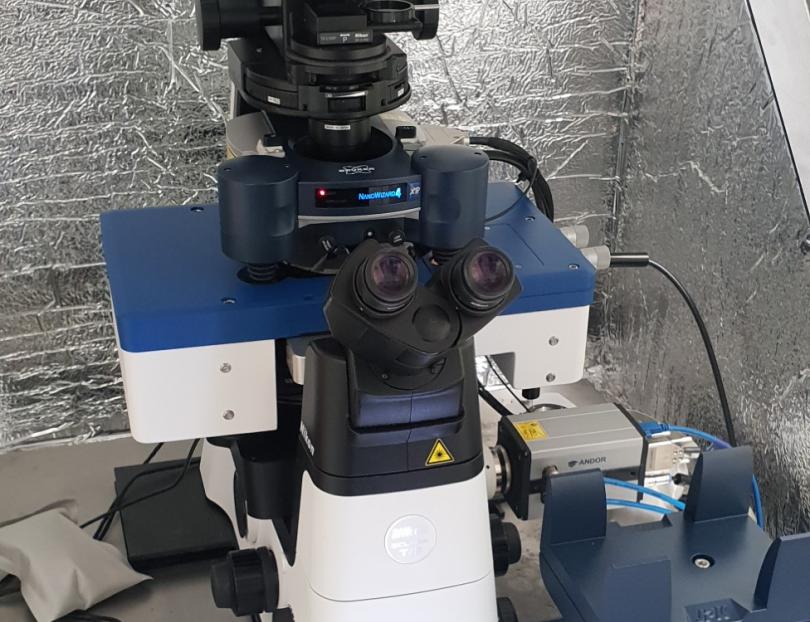The NanoWizard® 4 XP atomic force microscope is an advanced Atomic Force Microscope (AFM). AFM is a very high-resolution type of Scanning probe microscopy (SPM) which acquires data by “feeling” or “touching” the surface of a sample with a mechanical probe.
This AFM allows the rapid acquisition of a range of sample mechanical properties including elasticity, adhesion and deformation simultaneously with topography and epifluorescence wide field microscopy. The Nanowizard 4 XP features both the Bruker PeakForce Tapping technology and the JPK QI advanced mode.
It can be operated in air and in liquid and is particularly recommended for the study of cells, tissues, biomaterials, single molecules and membranes.
The long range hybrid stage allow cell-cell or cell-substrate force spectroscopy
Hybrid stage Piezo electric scanner: 200 x 200 x 200 µm 3 XYZ scan range
Nanowizard 4 XP head piezo electric scanner: 100 x 100 x 15 µm 3 XYZ scan range
Hybrid stage motorized XY: 20mm x 20mm for large sample tiling, correction of sample tilt
Temperature control: petri dish heater and JPK BioCell II (for coverslips)
Software: V7
probe holder: fixed spring cantilever holder for air and liquid, side view, directdrive.
Deflection detection: IR super luminescent diode λ= 850nm
Topview optical module for opaque samples
Nikon Ti-U inverted microscope(widefield, brightfield & epifluorescence)
High speed Andor Zyla CCD camera, fully integrated
Direct overlay of optical and AFM images
|







